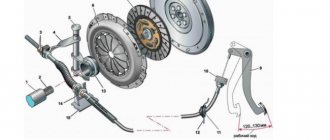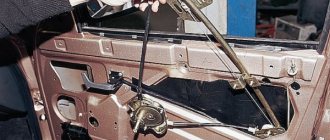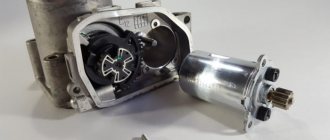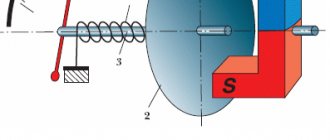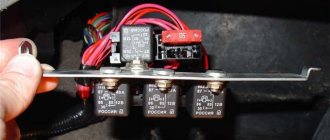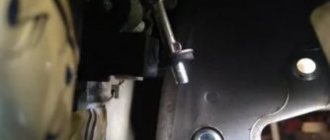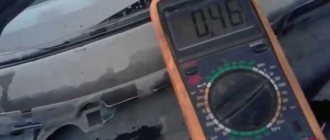What does this mean
Error 23 on the Pioneer radio reports that the contents of the flash drive or disk cannot be read by the main device. Sometimes this happens due to mechanical damage to the radio or media.
In this case, you won’t be able to fix the problem yourself; only replacing the flash drive or repairing the player will help.
When reading a disc
In this situation, the cause of the problem may be computer viruses, scratches on the surface of the media, or an incorrect track name.
Some radios do not work with Latin or Cyrillic alphabet.
To find out what the player responds to, you need to conduct an “experiment”: rename several files and check which of them will be read.
In addition, tracks on the disc may not play because the format is incorrect. You can check this information in the technical data sheet of the device.
When connecting a flash drive
The Pioneer radio does not read the flash drive for the same reasons that arise when connecting an optical drive:
- incorrect name;
- mechanical damage;
- viral infection.
Sometimes an error occurs when reading flash drives larger than 4 GB. This is due to the fact that most radios are still tailored to outdated standards, but this problem can be solved by dividing the memory of a USB flash drive into sectors. In addition, the problem may occur if the storage device is not formatted correctly.
Also, sometimes the problem is with USB; the connector does not turn on due to the radio being connected incorrectly and the corresponding lack of power for the player to work correctly.
In this case, only contacting a car service or reinstalling the GU yourself will help.
Re pioneer DEH-X7650SD 64 Gb flash drive cannot be read, error 23 appears on the screen
Ford Focus 2.0 2012 Error U1900 - CAN bus fault
Hi all. The problem seems to be well known. Formatted in both fat 32 and ntfs. BUT in my case: 1. Tried a new flash drive for 64 gb 2.0 - it worked for several months and error 23 came out. New one for 64 gb 3.0 - immediately error 23 came out. Old one for 16 gb 2.0 - works flawlessly.
The manual for the car radio states that the maximum number of playable files is 15,000. That is, as I understand it, THEORETICALLY it should read a 126 gig flash drive and it’s not a matter of volume. The instructions do not indicate which USB. most likely 2.0 of course. So the question arises. will it play a usb 3.0 flash drive? Maybe someone has encountered a similar problem. There is no opportunity or desire to buy an endless number of flash drives in the hope of stumbling upon a compatible one, so I ask for your help. It can take 32 gb, but I don’t know yet whether to take 2.0 or 3.0. Thanks in advance to everyone who responded!
I think you still need 32 GB and 2.0, 64 GB may not be officially supported. What do they say in the instructions? what is the maximum volume?
———- Message added on March 10, 2015 at 03:44 pm ———-
I looked through the instructions, error 23 - this is an unsupported format. What is your music recorded in?
———- Message added on March 10, 2015 at 03:46 pm ———-
yes, and more. When formatting, select the standard cluster size!
How to fix
You can fix the problem in different ways, depending on the cause of its occurrence. For example, in the event of a virus infection, the removable drive needs to be connected to the laptop and run an antivirus program scan. At the same time, it is important to have updated malicious code databases, since they are periodically modified and outdated detection algorithms may not recognize the threat. In some cases, the infection is so extensive that it is impossible to recover information.
There are other causes of failure, and, accordingly, methods for solving them.
Formatting
Modern media have the NTFS file system, which is not always recognized by car radios. To fix the problem, you need to reformat the device to FAT16 or FAT32. To do this, you need to connect the drive to your PC, wait for it to appear in the task manager under the “Computer” tab and right-click on it to select “Format”.
In the window that opens, you need to change the “File system” parameter to the desired one and, if necessary, change the cluster size. It is better to choose a standard size, after which the system will start the process, warning you about the loss of files. Because of this formatting feature, all tracks must be transferred to the computer and moved back at the end of the procedure.
Wrong name
The specificity of some radio tape recorders has already been mentioned above.
After testing, during which it becomes clear which alphabet the equipment works correctly with, it will be enough to rename all the files.
Wrong format
In this case, everything is extremely simple: you need to convert the files into a suitable format. For this, there are various programs (FSS Audio Converter, etc.) and online services that do not require installation on a computer.
They have intuitive controls and work with many files, so there is no need to provide detailed explanations for their operation.
About notOshibka.Ru
Consent to the processing of personal data
I hereby confirm and give my voluntary consent to the website neoshibka.ru (Internet address https://neoshibka.ru/) in accordance with Article 9 of the Federal Law of July 27, 2006 N 152-FZ “On Personal Data” for processing and the use of my personal data specified during the registration process, commenting, or when filling out any other contact form on this site, with or without the use of automation tools, including collection, recording, systematization, accumulation, storage, clarification (updating, changing ), extraction, use, transfer (distribution, provision, access), depersonalization, blocking, deletion, destruction of personal data in order to collect statistics and improve the services provided by the site. The processing of personal data is also carried out for the purposes of my information notification (distribution of information, if desired, there is an unsubscribe function) and for conducting analytics and statistics.
I am aware that:
- This consent to the processing of my personal data specified during registration on the Site, sent (filled out) using the Site, is valid for 20 (twenty) years from the date of registration on the Site;
- Consent can be withdrawn by me based on a written statement in any form;
- Providing personal data of third parties without their consent entails liability in accordance with the current legislation of the Russian Federation.
Any technology, even the best, can fail its owner at some point. The Pioneer radio is no exception in this sense. Even in this device from a well-known manufacturer, annoying errors periodically occur that can confuse even an experienced car enthusiast. What are these errors and why do they occur? Is it possible to eliminate them yourself? We’ll talk further about eliminating typical errors with flash drives of type 23 and 19 on Pioneer.
List of the most famous Pioneer radio errors and how to fix them
Most often problems arise with USB drives. Let's start with them.
CHECK USB error
The message CHECK USB appears on the display of the radio when it refuses to read a flash drive or some other storage device (for example, a portable hard drive). This message indicates a power failure in the USB device. A failure may occur either due to the incompatibility of this drive with the radio, or due to a short circuit in the connector itself.
- First you should carefully inspect the USB port on the radio. Perhaps dirt or some foreign object got into it, which caused a short circuit;
- if there is no short circuit, you should pay attention to the amount of current consumed by the USB drive (this figure can be found in the instructions for the device). The fact is that some flash drives require a current slightly higher than 500 mA for normal operation, while the radio is designed for exactly 500 mA, which leads to the CHECK USB error. There is only one way out: replace the flash drive, having previously specified the amount of current consumed;
ERROR 23 with flash drive
When error 23 occurs, the user sees the message ERROR-23 on the radio display. This happens immediately after installing the flash drive into the USB port of the radio. The error means that the file system in which the flash drive is formatted is incompatible with this radio. That is, if the drive was formatted in the outdated FAT32 (or even FAT16) system, the error is guaranteed to appear.
Solution: format the flash drive in the NTFS system, supported by all Pioneer radios.
- The flash drive is removed from the radio and inserted into the home computer. When it appears in the list of connected devices, you should right-click on it. A context menu will appear in which you should select “Format”;
In the context menu, select the option to format the drive
Select the NTFS file system from the drop-down menu
Troubleshooting Error 19
This error is shown on the display as ERROR-19. This can occur either due to improper formatting of the drive, or due to storing files on it with extensions other than .mp3 (such as .doc, .exe, .txt, .pdf, .com). MP3 files can also cause an error if they are stored in many folders with a high level of nesting and an abundance of Cyrillic characters in the names.
- remove all extraneous files from the flash drive, except mp3. If mp3 files are “scattered” across many folders, organize their structure by placing them in 3-4 new folders, and the names of these folders must be written in Latin letters;
- If this does not help, you should insert the USB flash drive into the computer and check it for viruses. As a rule, viruses do not harm the radio, but often copy executable files onto a flash drive, which the standard Windows file manager does not “see”, but the radio “sees” perfectly;
- if the anti-virus program for some reason failed to remove the detected viruses, there is only one thing left: completely formatting the drive in the NTFS system, as shown above;
ERROR 11
There are two problems that cause ERROR-11 to appear on the display. Either the CD inserted into the radio is seriously scratched or covered with dirt, or there is some kind of mechanical fault in the radio (most often the CD drive of the radio fails).
- remove the disc and gently wipe it with a piece of soft cloth;
- clean the drive lens using a special cleaning disk;
- if it doesn’t help, there is only one way out: contact the nearest Pioneer service center;
Car radio error codes
Complex car radio malfunctions
In this article we will try to answer the questions:
What is a complex fault?
How can error codes help when repairing car radios?
In the practice of repairing car radios, there are often cases when, in order to restore the operation of the car radio, it is necessary to find and eliminate not one specific malfunction, but several. It’s good if the breakdowns are not related to each other or relate to different electronic components of the car radio (for example: no sound - the amplifier chip is faulty; no disk reading - the laser reader lens is dirty).
What if both faults are in the CD drive? With such malfunctions, the process of diagnosis and repair becomes difficult, since, having eliminated one malfunction, we are immediately faced with the manifestation of another. Such a malfunction with several causes can be called complex .
Let's look at troubleshooting a complex problem using the example of repairing a Pioneer DEH-P3500MP car CD receiver. This is a case from real repair practice and its consideration will be useful for those who are interested in the topic of repairing car radios with their own hands.
The Pioneer car radio came to the repair table due to the lack of reading from the CD.
Upon external inspection, it was noticed that when the disk eject button is pressed, the process of ejecting the disk occurs slowly. The car radio was also heavily soiled with dust.
It is no secret that when heavily soiled, the optics are the first to suffer - the surface of the laser reader lens becomes covered with fine dust and this prevents the laser beam from focusing on the surface of the CD. In this case, there may be failures during playback (the sound “hiccups”), failures during the initial loading of the disc (“NO DISK”, “Error”), a long search for a recording when switching to another song. Do not forget that the cause of such a malfunction can be not only contamination of the optics, but also degradation of the laser diode in the optical unit.
For car radios, if any malfunctions occur, an error code appears on the display. Knowing the decoding of the error code, you can more quickly find the faulty unit and not waste time on diagnostics. So, for example, on the Pioneer DEH-P3500MP car radio in question, when turning on and loading a disc, the message “ERROR-11” appeared on the display. At the same time, spinning of the disk was observed - which means the spindle motor is in order.
ERROR-11
If you refer to the service documentation for this car radio model, the code “ERROR-11” stands for: - No beam focusing . Well, everything is quite simple here, as already mentioned, the violation of the focusing of the beam is associated with contamination of the car radio with dust.
In this case, it may be necessary to completely clean all mechanical parts of the car radio and its housing. Cleaning the laser reader lens is made more difficult by the fact that it is necessary to disassemble the CD mechanism and remove the laser reader from it. Read about how to disassemble the CD mechanism here and here (another type of drive).
After the laser unit is cleaned of dust, the operation of the car radio can be completely restored. But we are looking at a complex malfunction
.
Upon further testing the operation of the car radio on several MP3 discs, it turned out that when switching several songs forward or backward, a failure occurs. After a long and unsuccessful search for the desired track, the ominous inscription “ERROR-30” appeared on the car radio display.
ERROR-30
Also, when playing a recording from a disc, errors (“stuttering” or “croaking”) were observed, and at times, immediately after loading an MP3 disc, a mysterious message “NO AUDIO” appeared.
CDs with regular encoding (Compact Disc Digital Audio) played more or less normally and without glitches. It is known that with normal recording (Compact Disc Digital Audio) without compaction, as, for example, in MP3, the error correction and correction system is easier to restore the read data if it is poorly read from the disk.
In this case, you can make an erroneous conclusion that the laser optical unit is faulty (degradation of the laser diode), and it needs to be replaced with a new one. But there are pitfalls here. Let's remember what errors the car radio gave us and look at the service documentation.
From the service manual for the Pioneer DEH-P3500MP car radio, we learn that the error code “ERROR-30” stands for: — Search time exceeded . And if you think logically, you can come to the conclusion that some of the CD drive motors are faulty.
It turned out that the cause of the “ERROR-30” error in this case was the laser reader positioning motor. It was he who produced low revs, which led to failures when playing and switching to another track. Remember that the disk loading process was slower than usual. If we consider that this type of CD drive has a design where 2 motors are used and the positioning motor also performs the function of loading the disc into the CD drive, then it becomes clear that the reason is precisely the positioning motor.
After replacing the positioning motor (marked FF-050SB-11170; D/V9.0) with a similar motor marked (FF-050SB-13130; D/V5.9), the fault completely disappeared, and no failures were observed during testing.
Laser Reader Positioning Motor
It is also worth paying attention to the fact that when loading some MP3 discs, the Pioneer DEH-P3500MP car radio displays the error code “ERROR-23” ( Invalid data format ) and the recording from the disc is not played.
ERROR-23
The reason is that the recording format of this MP3 disc does not comply with the ISO9660 Level1, Level2 specification. The car radio gives an error and refuses to read the disc. Unfortunately, nothing can be done here, since the processor decoding the recording does not support this recording format.
This is how we used an example to look at how to fix a complex problem in a Pioneer car radio. At the same time, the causes of the errors were eliminated one by one:
“ERROR-11” – severe contamination of the optical unit with dust (resolved by cleaning the lens);
“ERROR-30” – malfunction of the positioning motor and disk loading/unloading (resolved by replacing the positioning motor).
Both malfunctions are related to the operation of the CD mechanism, and this creates confusion and encourages an erroneous judgment about the causes of the malfunction.
